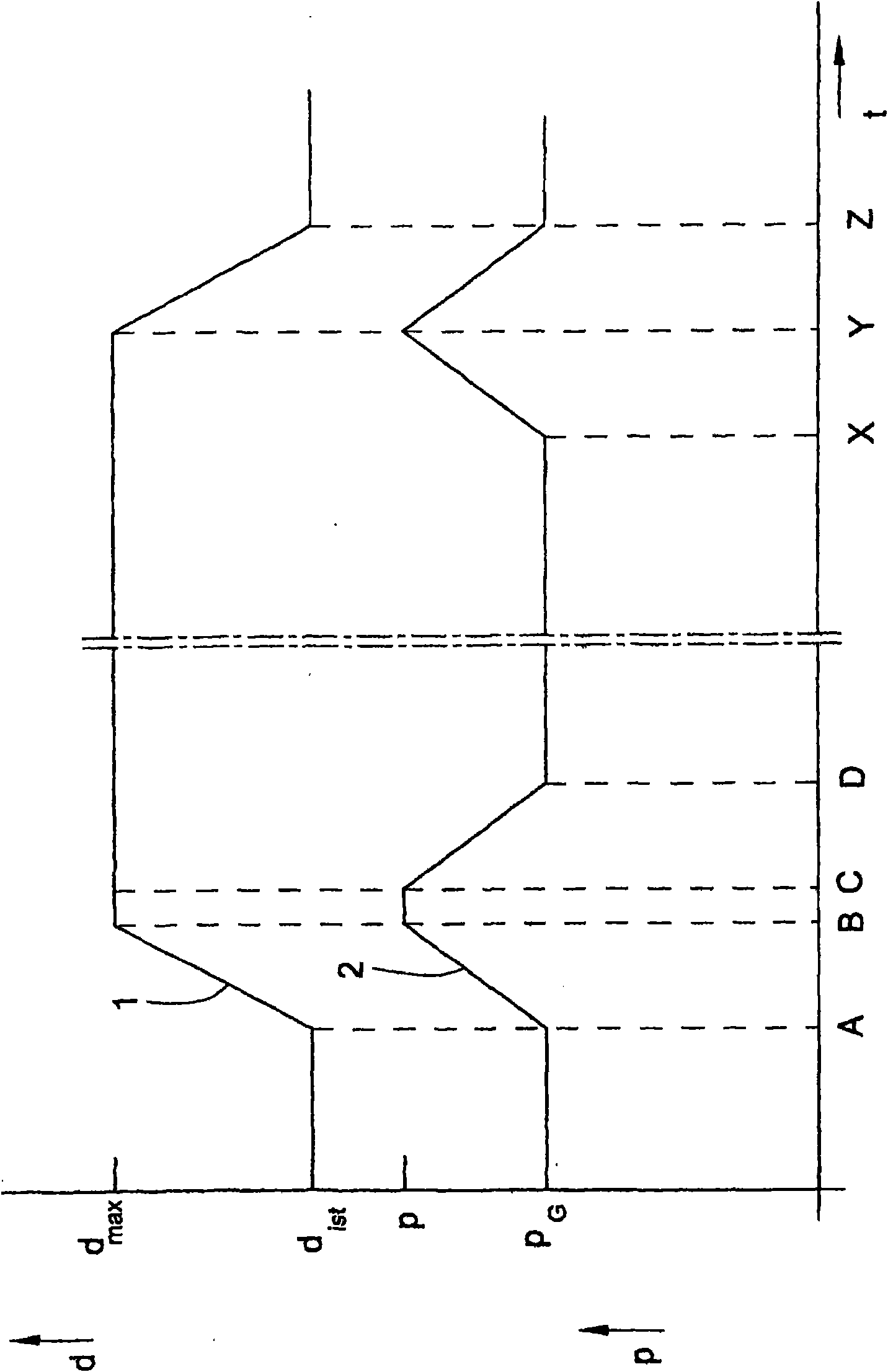Method for operating a textile machine which is provided with a vacuum device and produces crosswound bobbins
A textile machine and negative pressure technology, which is applied in the field of manufacturing cross-winding bobbins, can solve the problems of unavailable, difficult textile machines, etc.
- Summary
- Abstract
- Description
- Claims
- Application Information
AI Technical Summary
Problems solved by technology
Method used
Image
Examples
Embodiment Construction
[0021] In the drawing, the rotational speed curve schematically represented by the passage curve 1 of the drive motor of the suction unit of the textile machine is shown graphically, and the passage curve 2 in the suction unit of the textile machine when the textile machine is restarted after a batch change Schematic representation of the negative pressure curve. In this case, the abscissa represents the time course of the method according to the invention, with A, B, C, etc. marking different points in time which will be described further below. The ordinate shows the negative pressure level p present in the textile machine suction system and the rotational speed level d of the drive motor of the textile machine suction unit.
[0022] When the open-end spinning machine is started up again after a batch change, a predeterminable negative pressure p first occurs in the suction device of the textile machine G , the negative pressure is specified in such a way that it satisfies ...
PUM
 Login to View More
Login to View More Abstract
Description
Claims
Application Information
 Login to View More
Login to View More - R&D
- Intellectual Property
- Life Sciences
- Materials
- Tech Scout
- Unparalleled Data Quality
- Higher Quality Content
- 60% Fewer Hallucinations
Browse by: Latest US Patents, China's latest patents, Technical Efficacy Thesaurus, Application Domain, Technology Topic, Popular Technical Reports.
© 2025 PatSnap. All rights reserved.Legal|Privacy policy|Modern Slavery Act Transparency Statement|Sitemap|About US| Contact US: help@patsnap.com

